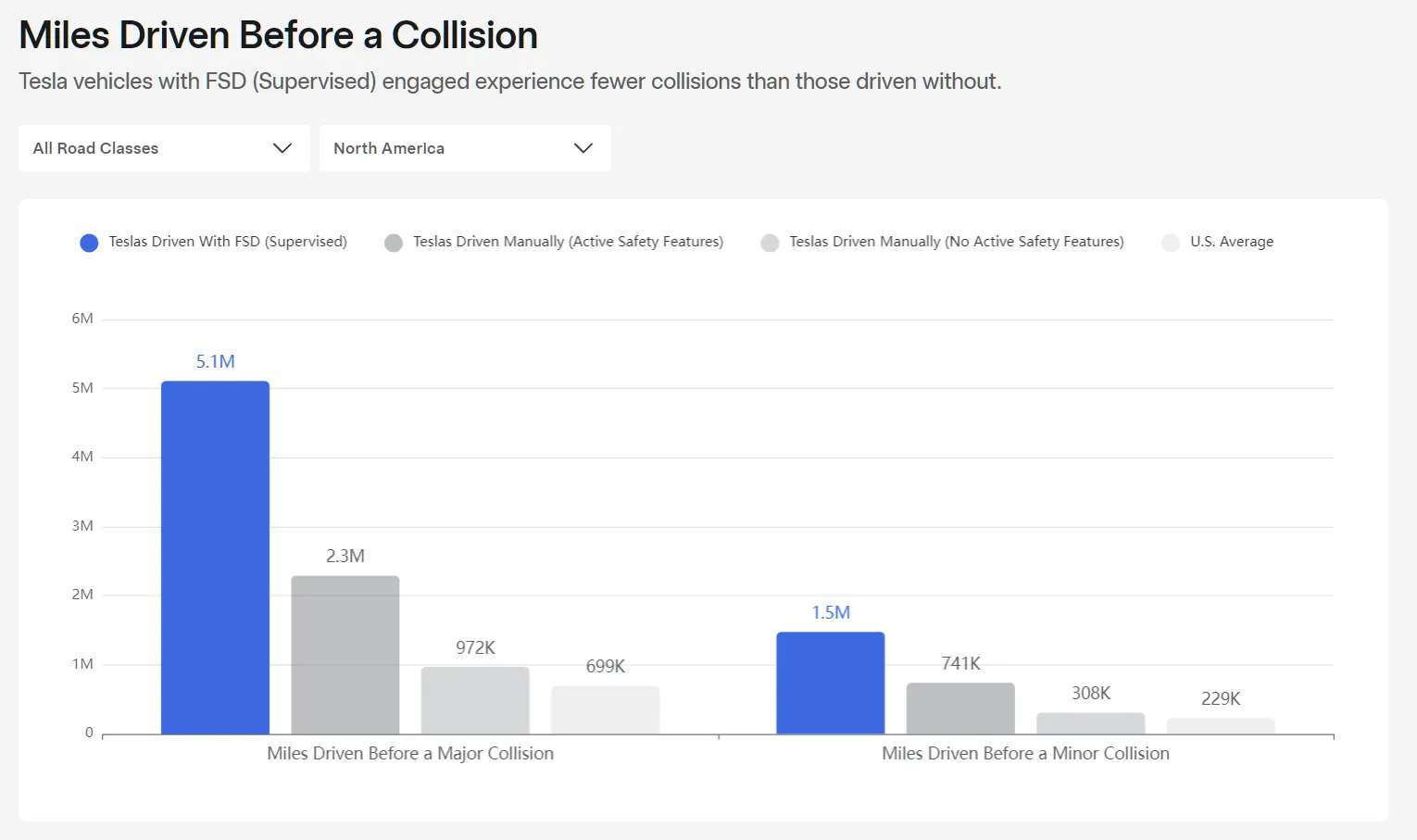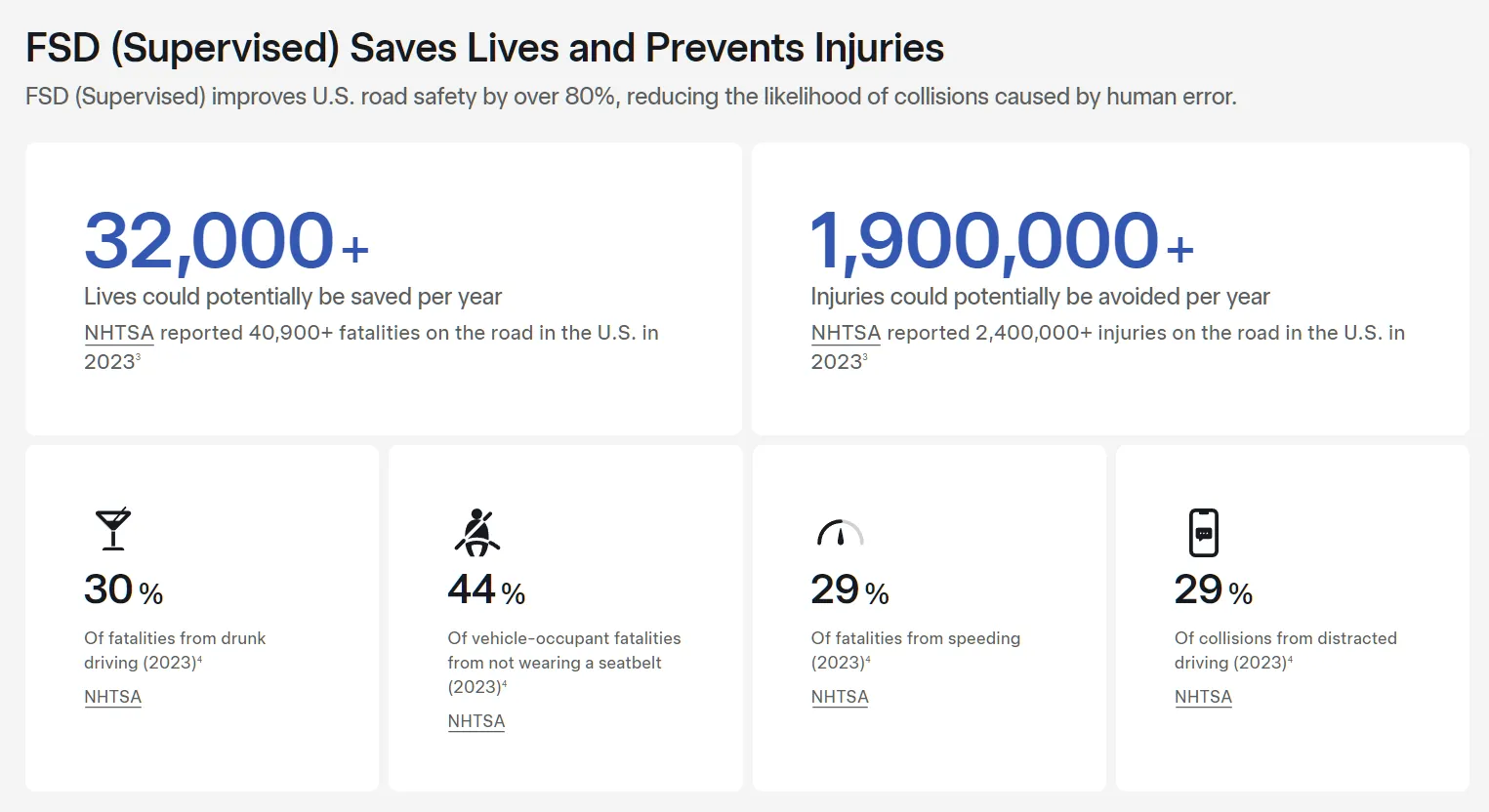Tesla added a new safety page for its Full Self-Driving (Supervised) feature with a live counter that records all the miles driven with FSD, both in total and in cities.
Clear difference In crash rates
The data from Tesla shows that crashes happen much less with FSD turned on.
- Major collisions: On average, FSD goes 5.1 million miles before a major crash. This is more than double the 2.3 million miles for manual driving in Teslas that use the in-built safety tools. For all U.S. drivers, the average is about 699,000 miles per major collision.
- Minor collisions: FSD averages 986,000 to 1.5 million miles between minor crashes. The national average is around 178,000 to 229,000 miles for this type.
- Off-highway crashes: FSD reduces these crashes about five times compared to standard U.S. driving.

These stats updates regularly, so the numbers keep changing as more miles are driven. This makes the system more open than before.
How the data is gathered
Tesla uses a lot of data from its cars, including each time an airbag goes off or a strong force is detected. They classify crashes as “major” if airbags deploy. If a crash happens within five seconds after a driver takes over from FSD, it still counts as an FSD incident.
Tesla then compares three things: FSD on, regular manual Tesla with safety features, and the whole U.S. average. The company says if the whole country switched to FSD, 32,000 lives could be saved every year, and about 1.9 million injuries could be avoided.
Human mistakes are the main reason for crashes. For instance, 30% of U.S. road deaths in 2023 involved alcohol, 44% without wearing seatbelts, 29% included speeding, and 29% from distracted driving. However, with FSD, Tesla claims these risks get removed.

Pressure for openness
Tesla was under pressure from safety groups and competitors like Waymo to be more open with its numbers. Waymo pushed for sharing detailed crash results from all companies. Tesla responded with this live-data website. Waymo’s own cars, which drive fully on their own, also have yearly safety reports.
Not everyone trusts these figures. Critics warn that most FSD miles happen on highways, which are already much safer than city streets. Some analysts say Tesla’s way of measuring like counting only airbag crashes might make their numbers look better than they are.
Tesla is rolling out more FSD updates, now at version 14.1.7 and these updates use bigger neural networks, which help the car make more complex driving decisions. FSD is getting tested in real-world robotaxi trials in Austin, Texas, with a goal to expand to more cities.
Tesla plans to update its safety numbers every quarter and the website is open to public now. As the miles increase, more accurate stats will come. Regulators, car owners, and competitors are watching to see if Tesla’s claims match what happens in real life on all roads.
You may also like to read:
- Tesla expands live pricing to Supercharger sites »
- Tesla releases FSD V14.1.7 with 2025.38.8.7 update »
- Tesla adds real-time supercharger data to Google maps »




